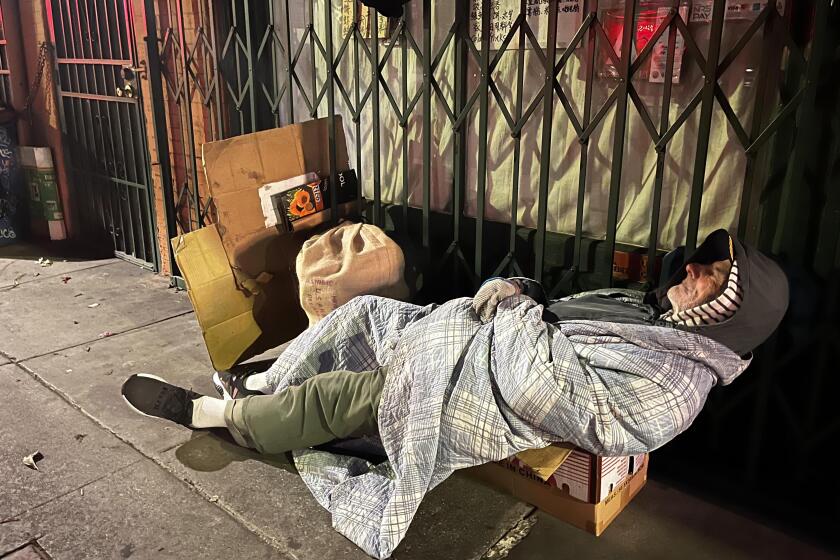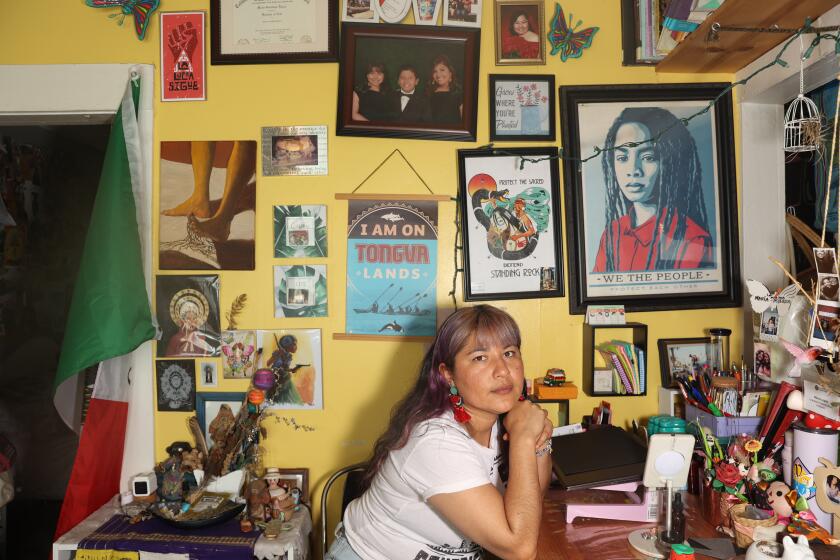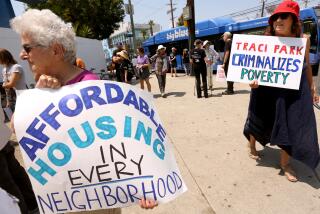Homeless encampment cleanups do little to change numbers of people on the street, study finds

Homeless encampment cleanups including Mayor Karen Bass’ Inside Safe program that moves people into motels and hotels have no long-term effect on the number of people living on the streets, a new study by Rand Corp. has found.
Teams of researchers returning monthly to Venice, Hollywood and Skid Row saw reductions in the immediate aftermath of cleanups, but within a month or two, the numbers went back up to the former level.
“We found continuing evidence that local encampment cleanup activities don’t appear to lead to a persistent reduction in the number of unsheltered residents in the area,” said Jason Ward, co-author of the study by Rand’s Center on Housing and Homelessness. “They just tend to move them around and the numbers tend to return in our relatively small area to previous trends pretty quickly.”
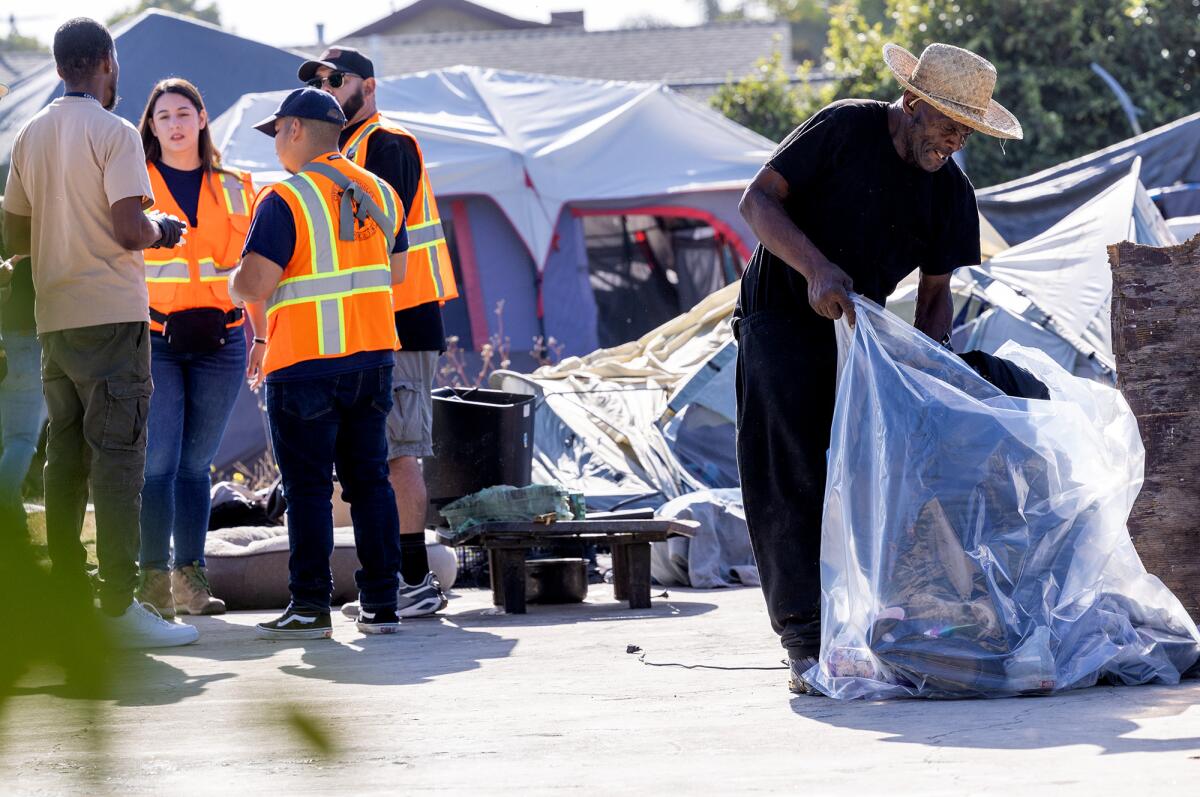
One unintended consequence of multiple camp removals in Venice was that the number of people living without any shelter, not even tents, doubled to nearly half the street population.
As homelessness persists as the city’s top social problem, academic researchers are digging deeper into the lives of the unhoused. Rand’s report was one of three released in July by research groups using teams of street interviewers, mobile phone questionnaires and a massive statewide survey.
Far more than the general population, people living on the streets and in shelters are victimized by violence and discrimination, one report found. A second reported that intimate partner violence is a cause for many women’s homelessness while, conversely, fear of homelessness leaves others in violent homes.
In the three Los Angeles neighborhoods examined in the Rand study, mental and physical health conditions and substance abuse were found to be disproportionately high, suggesting that some of the most vulnerable are slipping through the cracks of a system that is supposed to prioritize them for housing.
The region’s politicians have offered varying reactions to the decision, with some voicing relief and others worrying about an influx of homeless residents.
Against that backdrop, several trends were moving in the right direction in Hollywood, where the Los Angeles County Department of Mental Health is working with a coalition of community groups on a project called Hollywood 2.0 to provide comprehensive, community-based care and services to people experiencing mental illness and homelessness.
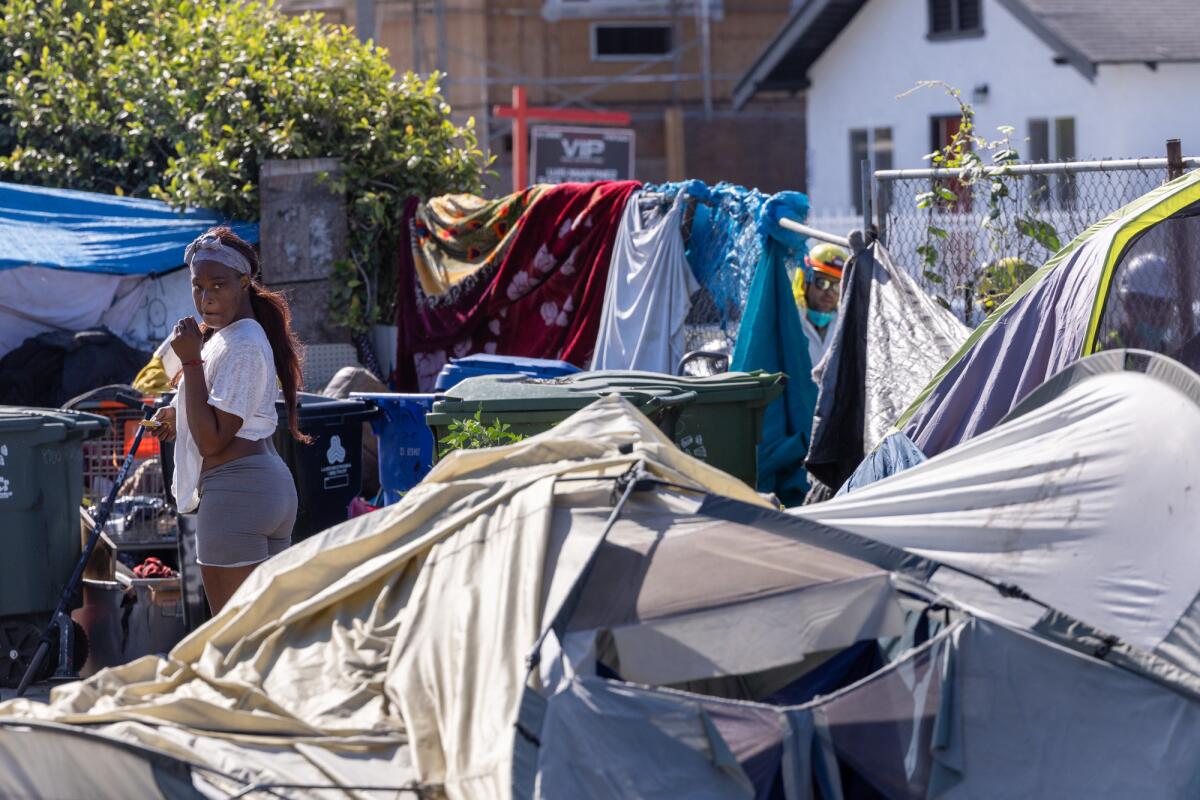
“It came out over and over: shorter time on street, more frequent engagements with service providers, highest rate of street medicine engagement,” Ward said. “It really shows an area where it seemed like a lot of relatively effective things are going on.”
Overall, 45% of the people interviewed in the three neighborhoods said they had chronic physical health conditions and 56% said they had chronic mental health conditions. Fifty-two percent said they had been living on the street for three years or longer, slightly down from 57% in Rand’s 2022 report.
“The fact that we see more than half our sample reporting being continuous on the streets for more than three years and around 75% for one or more years suggests ... there may be more work to do to make the system more responsive to various measures of acuity,” Ward said in a briefing on the report.
The report, Annual Trends Among the Unsheltered in Three Los Angeles Neighborhoods, used monthly counts by teams of researchers and in-depth questionnaires to produce a more detailed picture than the annual point-in-time count conducted by the Los Angeles Homeless Services Authority. The counts showed that the number of unsheltered people had not changed in 2023 after increases the prior year — results that track with LAHSA’s counts.
The researchers compared plots of their monthly counts with the dates of five cleanups in Hollywood, four in Venice and one on Skid Row, including three Inside Safe operations. In most cases, the plots showed a sharp dip around the time of the cleanup followed by a corresponding increase.
Mayor Karen Bass’ office issued a statement pointing out that the annual count conducted by the Los Angeles Homeless Services Authority found street homelessness down 10% across the entire city while the report covers only three areas.
“A majority of the study refers to what happened before the Mayor took office,” the statement said. “We have changed the status quo. Inside Safe is just one part of a locked-arms approach that has brought together the County, City, State and Federal government partners to bring people off the streets, connect them with comprehensive services and a path toward permanent housing.”
While acknowledging that it couldn’t generalize to the entire population, the Rand study found a greater connection in the three communities between substance use and homelessness than other studies. A series of questions called a screen identified 84% of respondents meeting the criteria for a lifetime substance use disorder, and 48% self-reported a substance use disorder, a much higher figure than the 30% found in LAHSA’s self-reported survey. Twenty-nine percent reported having having had one or more overdoses.
Under state law, landlords can evict tenants if they are planning a “substantial remodel” of a unit. Long Beach housing advocate Maria Lopez saw it as a loophole in tenant protection law.
“These findings underscore the need for outreach efforts to incorporate substance use screening and low-barrier substance use treatment options for the unsheltered,” the authors wrote.
Some significant differences were observed between the neighborhoods. Skid Row was 68% Black and Venice was 65% white. Hollywood had the highest Latino percentage at 28%. Unsheltered residents of Skid Row were 14 years older, on average, than those in Hollywood and more than twice as likely to report being in poor health than in the other two neighborhoods.
Hollywood residents had the highest rate of overdoses (40%) and nearly a quarter of them reported developmental disability, nearly three times the rate in Venice. Venice residents had the highest educational levels, with 35% reporting some college or vocational school compared with about 20% in Hollywood and on Skid Row.
Overall, 31% of respondents said they had last been housed outside California, a number higher than LAHSA has reported. The rate in Venice was 41%.
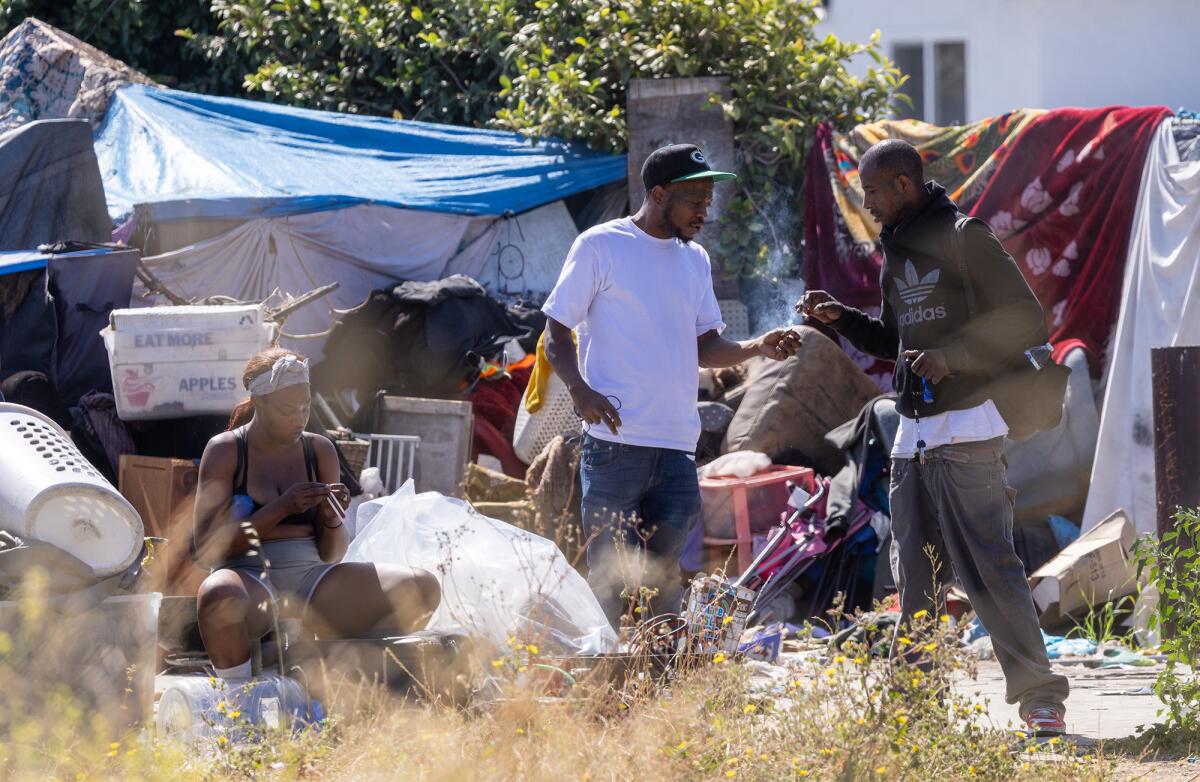
A multiyear mobile phone survey by the UCLA Fielding School of Public Health and the USC Suzanne Dworak-Peck School of Social Work expanded its questionnaire in 2023 to look into discrimination and violence.
Randall Kuhn, a professor of community health sciences in the Fielding School of Public Health, said the team wanted to know whether the proliferation of anti-camping laws would unleash hostility toward homeless people.
“It felt like this was potentially going to create an enabling structure for discrimination and violence,” he said in an interview.
They found that 31.8% of respondents reported experiencing discrimination daily and 53.9% weekly and that 16% experienced physical violence and 7.5% reported experiencing sexual violence within the prior 30 days, all rates many multiples greater than those experienced by the general population. The study could not conclude to what extent the discrimination and violence was committed by other homeless people.
In contrast with the general population, the likelihood of being victimized was not influenced by age, race/ethnicity or gender, excepting sexual violence.
A possible explanation, the authors wrote, is that homelessness is “so marginalizing” that those differences become secondary.
The findings “underscore how negative beliefs about individuals with severe mental illness and substance use disorders may intersect with and exacerbate anti-homeless stigma and behavior,” Kuhn said.
The third study, by the Benioff Homelessness and Housing Initiative at UC San Francisco, is a follow-up to its January statistical report that found 17% of homeless women experienced intimate partner violence in the six months before becoming homeless.
The researchers interviewed 104 respondents to the California Statewide Study of People Experiencing Homelessness to put the statistical findings into human context.
“I wish everybody had the opportunity to read these stories,” said lead author Anita Hargrave. “There is so much tendency in the ongoing discourse on homelessness to dehumanize. When you read through people’s stories when they came to that point when they could no longer be housed, it’s such a powerful way of creating empathy.”
The interviews showed that abusive relationships precipitated and prolonged homelessness, that a need for financial stability influenced staying in abusive relationships and that stigma and a dearth of domestic violence shelters exacerbated the connection between abuse and homelessness.
“Every time when you ask for something, [case managers] tell you, ‘It’s not guaranteed but we will work on it,’” said a 37-year-old woman who was not named in the report. “So, you get the feeling of scared. If it’s not guaranteed and not going to happen, then what will happen? So let me stay with my husband. At least I have a place.”
More to Read
Sign up for Essential California
The most important California stories and recommendations in your inbox every morning.
You may occasionally receive promotional content from the Los Angeles Times.
